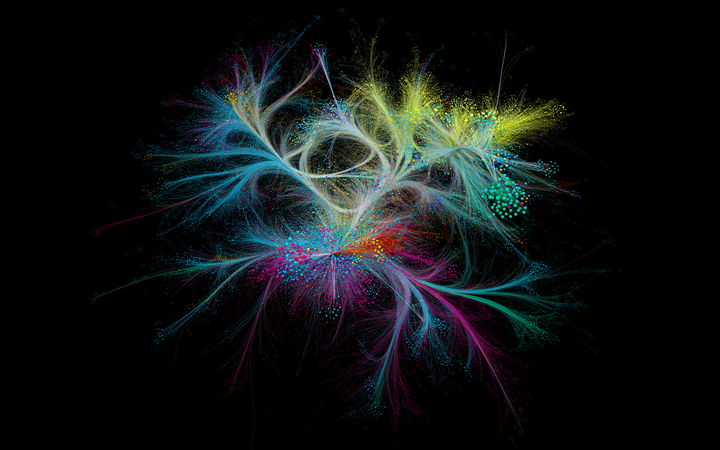Deep Learning for Social Analytics
6 ECTS Module for Master Students
Credits
- 6 ECTS module
- 2 courses
Deep Learning for Text and Graphs(Lecture) &Social Analytics with Deep Learning(Problem-based Learning)
Target Audience
- Master students in “Data Science” and “Internationales Wirtschaftsingenieurwesen (IWI)”
- Students with a strong interest and motivation in acquiring the quantitative skills required to analyze social phenomena of importance to organizations, businesses and policy makers.
Instructor(s)
Overview
Social analytics broadly refers to measuring, modeling, visualizing and interpreting interactions between actors (e.g. organizations, firms, employees, customers, users, scientists, citizens or politicians) and their connections with objects (e.g. topics, opinions, categories, concepts, products, or ideas). Data about these interactions and connections are available in ever greater detail and quantity from diverse digital sources, with social media platforms being just one of them.
The discource and debates about current societal issues can be monitored from digitized news archives. Organizations speak about their positioning and partners via their websites. Firms solicite feedback from customers via online forums and track their interactions with products. In diverse fields such as sports, culture, and art, as well as science, technology, and software development, dedicated online communities or (user-generated) data archives keep track of historical interactions and connections among actors and objects.
Tapping into these kinds of data sources for social analytics allows public and private decision makers, among other things, to work towards the following goals: (1) detecting emerging trends, (2) tracking prevailant opinions over time, (3) identifying influential actors, (4) understanding the diffusion of certain objects, (5) supporting or preventing certain social interactions, (6) finding matching collaboration partners, (7) discovering novel ideas, (8) gathering competitive intelligence, or (9) generating product recommendations.
Relevant data on interactions and connections among actors and objects is often embodied in text and/ or needs to be converted into graphs. Therefore, the course introduces the fundamentals and current state of machine learning for unstructured text and graph data. The course has a particular emphasis on recent advancements in deep learning architectures. Through lectures and coding labs using the deep learning framework PyTorch, students will learn the necessary skills to design, implement, and understand their own deep learning pipelines with respect to specific social analytics goals.
Objectives
After completing this module, students will be able to:
- Understand and describe the role of social interactions and networks for the development of specific domains.
- Gather, pre-process and visualize social data.
- Understand and apply deep learning techniques to text and graph data.
- Engage in a complex analysis project to deliver concise and actionable insights.
Grading
Students are evaluated based on their solutions of challenges assigned on each topic as well as a final team project.
50%(individual): 5 assignments about different topics.50%(team): Teams of 3 students work on a joint research project of their choice (submission deadline: March 31).
Registration
- Please register for the entire module
Deep Learning for Social Analyticshere: E-Learning StudIP - Due to the PBL and project-based nature of the module, we have to limit the number of participants to a max of 30 students.
- In case of over-demand, access to the course will be granted based on the quality of a brief research proposal to be submitted after the first class.
Time & Location
Deep Learning for Text and Graphs: Thursday, 15.00 - 16.30, Room O - 0.007.Social Analytics with Deep Learning: Thursday, 16.45 - 18.15, Room O - 0.007.
Course Notes & Materials
Access to course notes & materials will be published on StudIP.
Preliminary Schedule
| Session | Date | Topic |
|---|---|---|
| 1 | October 17 | Course Introduction (online) |
| 2 | October 25 | Word Embeddings & Topic Models |
| 3 | October 31 | RNNs and LSTMs for Text I |
| 4 | November 7 | RNNs and LSTMs for Text II |
| 5 | November 14 | Transformers |
| 6 | November 21 | Transformers: Pre-training |
| 7 | November 28 | Transformers: Post-training |
| 8 | December 5 | Graph Embeddings |
| 9 | December 12 | Graph Neural Networks (GNNs) I |
| 10 | December 19 | Graph Neural Networks (GNNs) II |
| 11 | January 9 | Project Lab |
| 12 | January 16 | Project Lab |
| 13 | January 23 | Project Lab |
| 14 | January 30 | Project Pitches |
Literature
- Barabasi, A. L. (2016). Network Science. Cambridge University Press.
- Hamilton, W. L. (2020). Graph Representation Learning. Synthesis Lectures on Artificial Intelligence and Machine Learning, Vol. 14, No. 3 , Pages 1-159.
- Jurafsky, D., & Martin, J. H. (2024). Speech and Language Processing (3rd unpublished draft).
- Ma, Y., & Tang, J. (2021). Deep learning on graphs. Cambridge University Press.
- Rao, D., & McMahan, B. (2019). Natural language processing with PyTorch: build intelligent language applications using deep learning. O’Reilly Media.
- Tunstall, L., Von Werra, L. , & Wolf, T. (2022). Natural language processing with transformers. O’Reilly Media.
